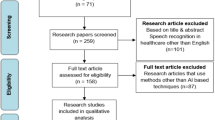Abstract
While speech recognition technology has long held the potential for improving the effectiveness of military operations, it has only been within the last several years that speech systems have enabled the realization of that potential. Commercial speech recognition technology developments aimed at improving robustness for automotive and cellular phone applications have capabilities that can be exploited in various military systems. This paper discusses the results of two research efforts directed toward applying commercial-off-the-shelf speech recognition technology in the military domain. The first effort discussed is the development and evaluation of a speech recognition interface to the Theater Air Planning system responsible for the generation of air tasking orders in a military Air Operations Center. The second effort examined the utility of speech versus conventional manual input for tasks performed by operators in an unmanned aerial vehicle control station simulator. Both efforts clearly demonstrate the military benefits obtainable from the proper application of speech technology.
Similar content being viewed by others
Author information
Authors and Affiliations
Corresponding author
Rights and permissions
About this article
Cite this article
Williamson, D., Draper, M., Calhoun, G. et al. Commercial Speech Recognition Technology in the Military Domain: Results of Two Recent Research Efforts. Int J Speech Technol 8, 9–16 (2005). https://doi.org/10.1007/s10772-005-4758-6
Issue Date:
DOI: https://doi.org/10.1007/s10772-005-4758-6




